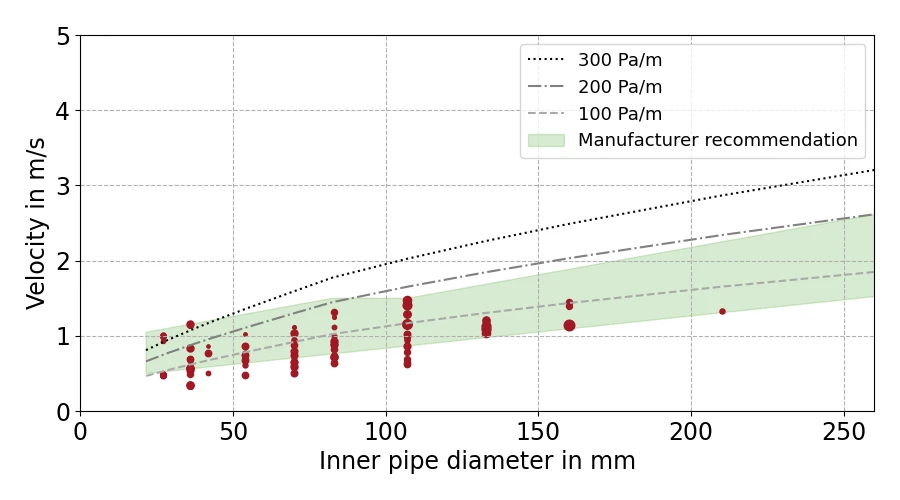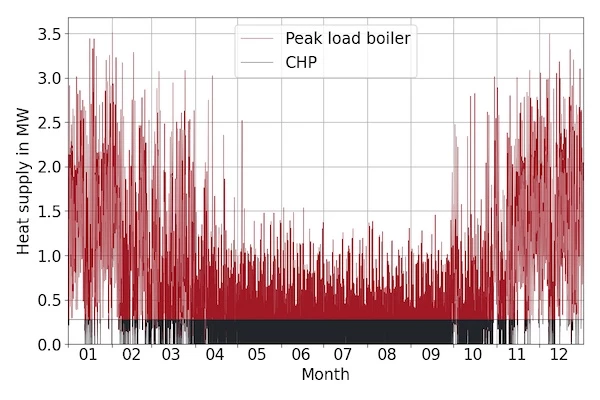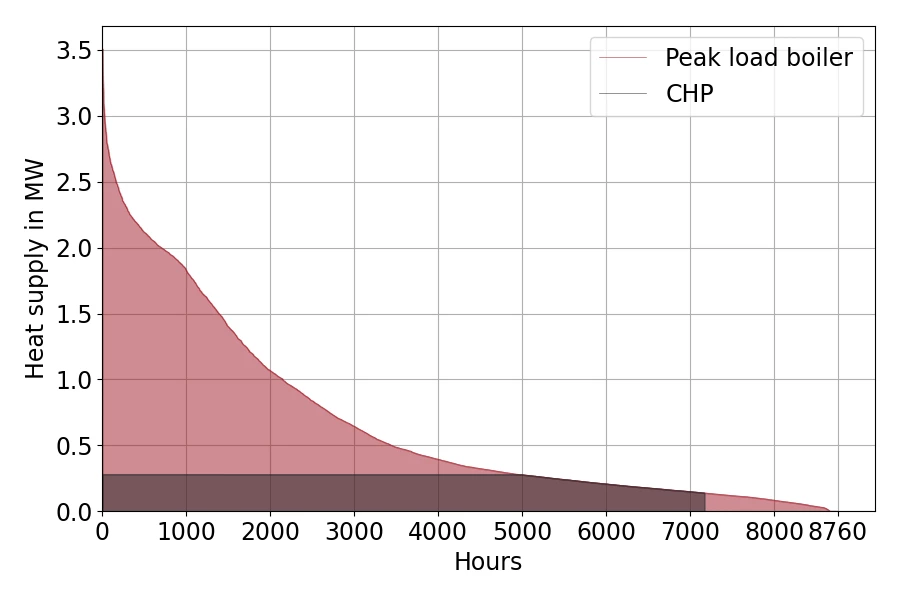Analysis of the results of the dynamic network simulation
In addition to the analysis of the detailed network operation, these simulation results can also be used to evaluate the network design in general. The following diagram, based on Nussbaumer [2016], shows a classification of the velocities of all pipe sections in the network in comparison with manufacturer recommendations.

The diagram shows that already this first estimation of the diameters meets the recommendations of a pipe manufacturer for most pipe sections. By iteration between simulation and analysis, the flow velocities can also be further optimized in our simulation environment. For the short overview in the context of this case study, however, this first estimation already shows sufficient agreement with the recommendations.
Another aspect for the analysis of the simulation results is the system configuration for the network's heat sources and generation equipment. Assuming a combined heat and power plant (290 kW) and a peak load boiler (3228 kW), the following operating times can be derived from the simulation results:

The transfer to a representation of the ordered annual duration curve is shown in the following figure. This can be used as basis for further optimization of the generation equipment and for an economic and ecological evaluation of the overall system.

For this simple case study, we limit ourselves to a comparison of the network losses for the 3 considered variants with different thermal insulation of the pipe network. The following illustration shows the comparison of the annual energy balances for all 3 variants.
The results show the influence of pipe insulation on the overall efficiency of the heating network for one simulated year. This can be the basis for an economic evaluation and further optimization steps. Our modular modeling approach and efficient model generation allows us to specifically address the requirements of our customers for each project. We hope that this simple showcase provided you with an insight into our methods and processes for network simulation and energy systems analysis.
If you have any further questions regarding this presentation or see potential for cooperation, we are looking forward to hearing from you:



